Introducing: Carv 2

Votes:
Today, we're excited to launch Carv 2, the next evolution in skiing technology.
Carv 2 clips to the top of the boot without an insert and is our most accurate experience, bringing real-time feedback and personalized coaching to every skier, for any boot, on every terrain.
If you’re an existing passholder you can upgrade to Carv 2 in your membership portal. If you are a new member, Carv 2 is available free with every season pass for $249/year.
To introduce you to Carv 2 I wanted to dive deep into what an incredible technical achievement Carv 2 has been, explore the challenges we’ve faced to build it, and discuss how Carv 2 fits into our vision for real-time sports coaching.
At Carv, our goal is to make skiing even more fun by helping you ski better.
Too often, we have to make a choice between moments of skiing for fun, and moments of learning. Some of us make this trade off, but many of us do not – meaning we can get stuck skiing the same way for years. We built Carv so you don’t have to choose.
Carv was borne from my own frustration with improving my skiing. Like many skiers, I hit a plateau after just a few seasons. Without regular coaching, I turned to friends and videos, but without real-time, consistent feedback, progress was slow. That’s why we dedicated the last seven years to developing Carv 1 – to deliver data-driven insights and audio coaching directly to you, on any run, whenever you need it.
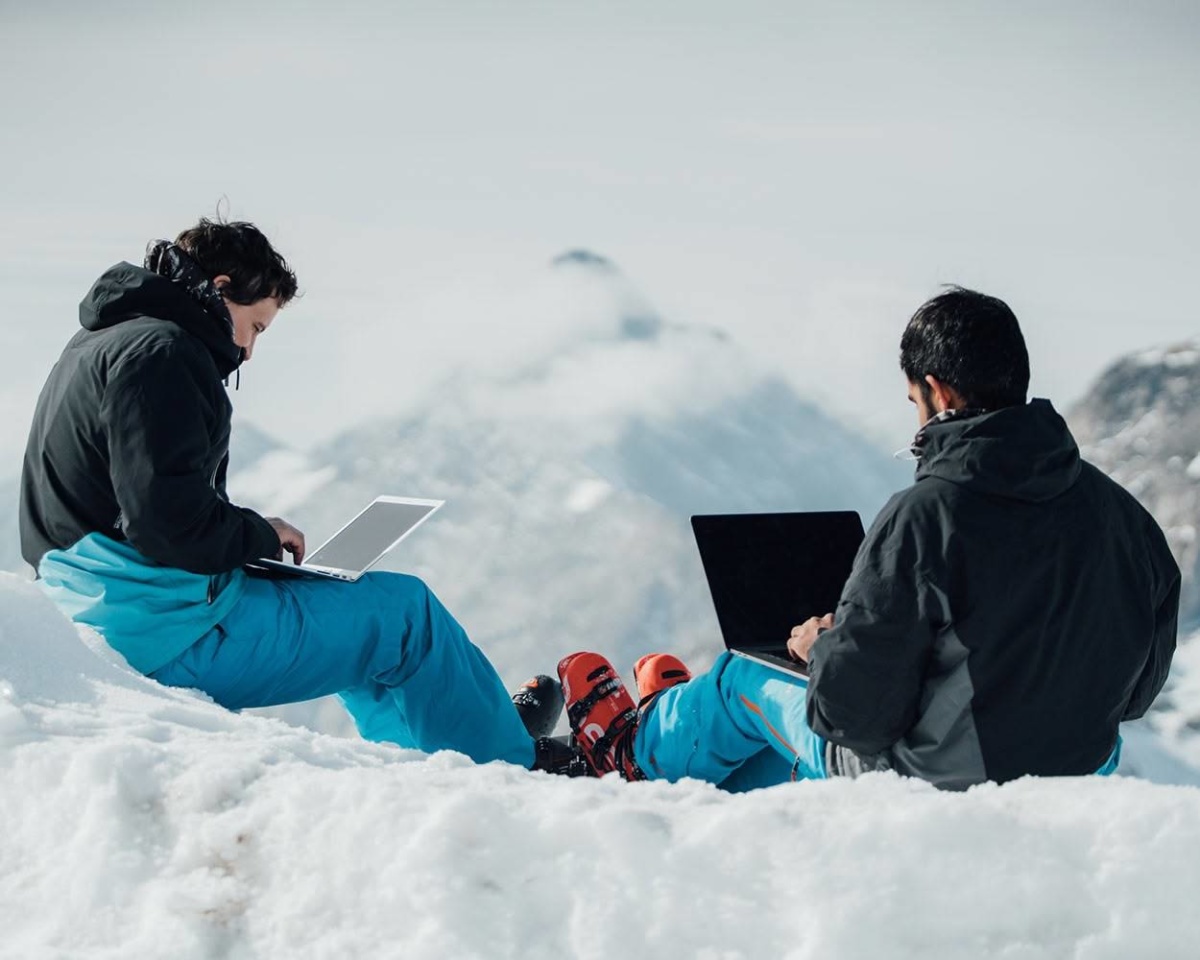
The early days, when Carv 1 was born (quite literally) on the slopes.
And Carv 1 has been a phenomenal success, coaching 40,000 skiers, giving over 2,600,000 hours of instruction, recording over 580,000,000 turns and sharing over 150,000,000 tips.
I’m immensely proud of our impact. The stories we hear from our community, and the way we’ve developed the product with you all over the years.
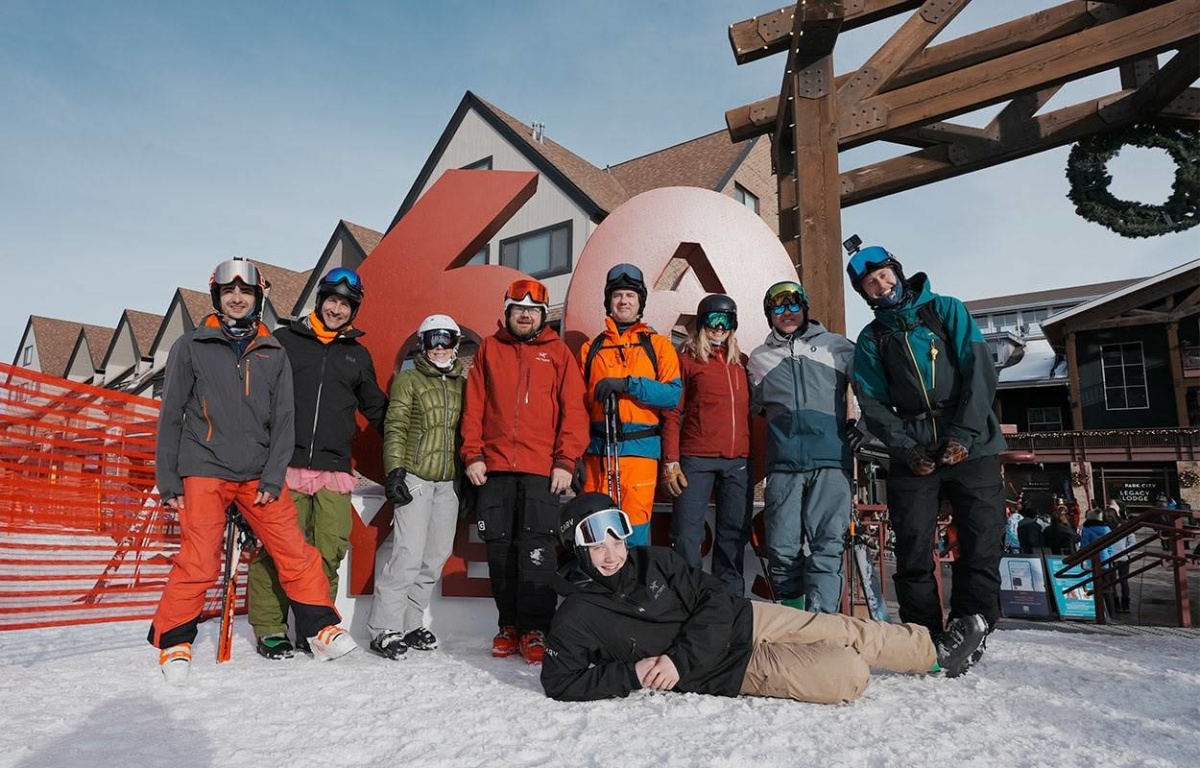
Just one of the many Carv meet ups that happen all around the world...
But we know it can be even better. We want to help more of you to improve, but there have been a few areas that hold Carv 1 back:
Carv 1 needs fitting into your boots - not an easy thing for some of us
The high cost of getting started with Carv 1 - it is a leap of faith
Carv 1’s feedback is limited to groomed terrain - most of us want to improve in other snow too.
Today, we’re excited to take our next step.
Meet Carv 2
Carv 2 combines groundbreaking new sensor technology with artificial intelligence analysis and all-terrain coaching.

Clip and go
The first thing we wanted to achieve with Carv 2 is simplicity – no installation, no wires, no sizes. One of the biggest challenges we’ve heard from customers is the difficulty of fitting Carv 1 into their boots, especially with the extra space it requires. Once we get our boots dialed, we don’t want to touch that fit. And to be honest, I don’t think we’ve been making friends in the boot-fitting world with Carv 1.
So for the last year, our engineering team’s mantra has been ‘clip-and-go', and we've moved (data science) mountains to achieve it.
Carv 2 is a powerful, but simple motion sensor that clips onto each boot strap. You can put it anywhere on that strap, it will learn its place and deliver accurate coaching. It is truly clip-and-go.
In one move, we’ve solved the fitting, comfort and robustness problem. Now, any skier can clip the sensor to the top of their boot, head out onto the slopes, and start receiving feedback – no hassle, no inserts, just great skiing.
More accurate
But we’re a company built on science, accuracy, and measurement, and we knew we couldn’t sacrifice that for simplicity.
Carv 2 clips to the top of the boot without a pressure sensing insert as used in Carv 1 and is our most accurate experience, bringing real-time feedback and personalized coaching to every skier, for any boot, on every terrain.
So we pushed ourselves to ensure that Carv 2 isn’t just easier to use – it’s also our most accurate system ever.
With data from over 580 million turns, we’ve trained an advanced AI model that delivers precise feedback without the need for a pressure sensor. In fact, our algorithm for 24|25 – Ski:IQ Nevado – is 6% more accurate than last year.
We calculate accuracy by analyzing how well Carv agrees with top-level instructors. The instructors score a labeled dataset of 4,000 videos from over 500 skiers of every ability level.
We then test the level of agreement of our Ski:IQ algorithm with the instructors to define our internal metric of accuracy. We call this measure Sam’s Tau, developed by our brilliant data science Sam van Den Brink. As a reference point, the 6% improvement is even greater than our year-on-year increase of Ski:IQ Hintertux for the 23|24 season, seen in this chart:
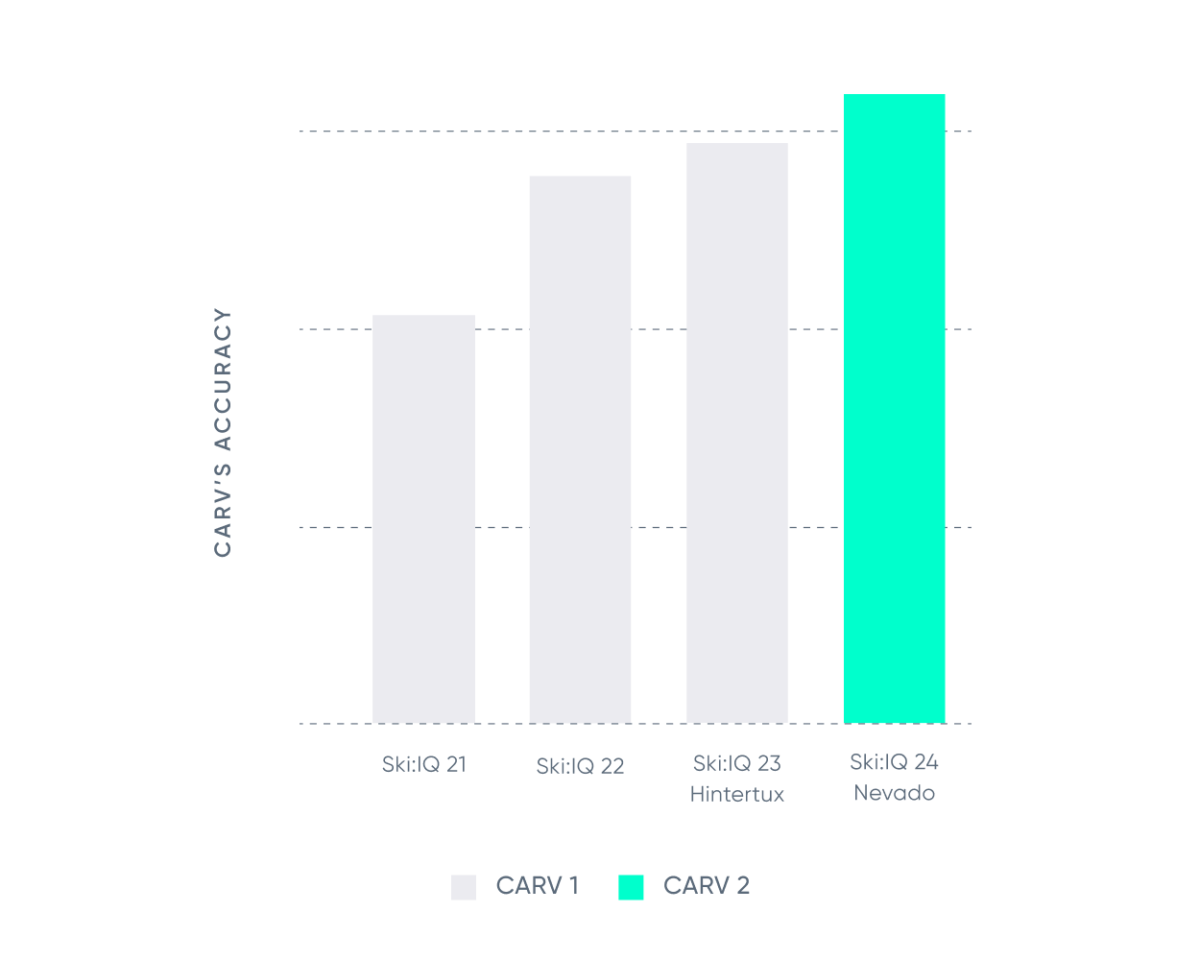
Carv 2's accuracy at measuring technique - measured by Sam's Tau
To achieve this increase in accuracy without the boot insert, Carv 2 had to overcome two key challenges: 1) finding where the sensor is placed on the boot and 2) how to measure body movement using only motion sensors.
I’m going to warn you that this next section goes pretty deep – so to make it easier for those not so interested in data science, click this link to jump past this section to the simple version.
Challenge 1: Know where the motion sensor is on the boot
The Carv 1 sensor combined a pressure and motion sensor fixed underfoot – so the system always knew where it was to within a reasonable margin of error.
The Carv 2 hardware is powered by a motion sensor. This incorporates an accelerometer and gyroscope that measure movement and twisting in every axis. The data from the sensors is combined at 400 times a second using a process called sensor fusion to calculate the orientation of the unit.
For Carv 2, we wanted skiers to be able to clip the unit to anywhere on the power strap: at the side, on the front, or anywhere in between. The hard part was turning the sensor rotation into a precise measurement of the ski boot’s orientation without knowing the exact location.
We didn’t want to create a system you had to ‘lock in a certain place’ or mount to the boot. And believe me, we explored those options. But we kept coming back to the ‘clip and go’ philosophy, and challenged ourselves to solve it another way.
Here’s how we did it:
The Carv 1 sensors have given us a large dataset where the orientation of the motion sensor is in-line with the ski boot (our tests showed us that this had an accuracy of up to 5 degrees in almost all cases).

So we set about training an ‘auto-calibration’ algorithm by giving a neural network random rotations of skiing data and having it work out the true rotation from the known Carv 1 dataset.
When trained on our 580,000,000+ turns, the algorithm can identify skiing and can calculate the orientation of the Carv 2 unit. This process happens quickly, and can determine orientation within 2-5 turns. Through its training, the algorithm has worked out what skiing, walking and sitting on a lift looks like and how to rotate data from your unit, wherever it is on your boot.
Practically the algorithm works by identifying motions that relate to skiing that can only be made in a certain axis – for instance, on a flat plane a ski can only tip along the axis of the length of the ski, unless it’s flat. The algorithm looks for these characteristic movements of skiing or walking to work out the rotation of the Carv 2 sensor to that of the ski. Once we have calculated the rotation we can map all of the metrics we used in Carv 1, and then the system continuously works to increase the accuracy of the orientation estimation every turn.
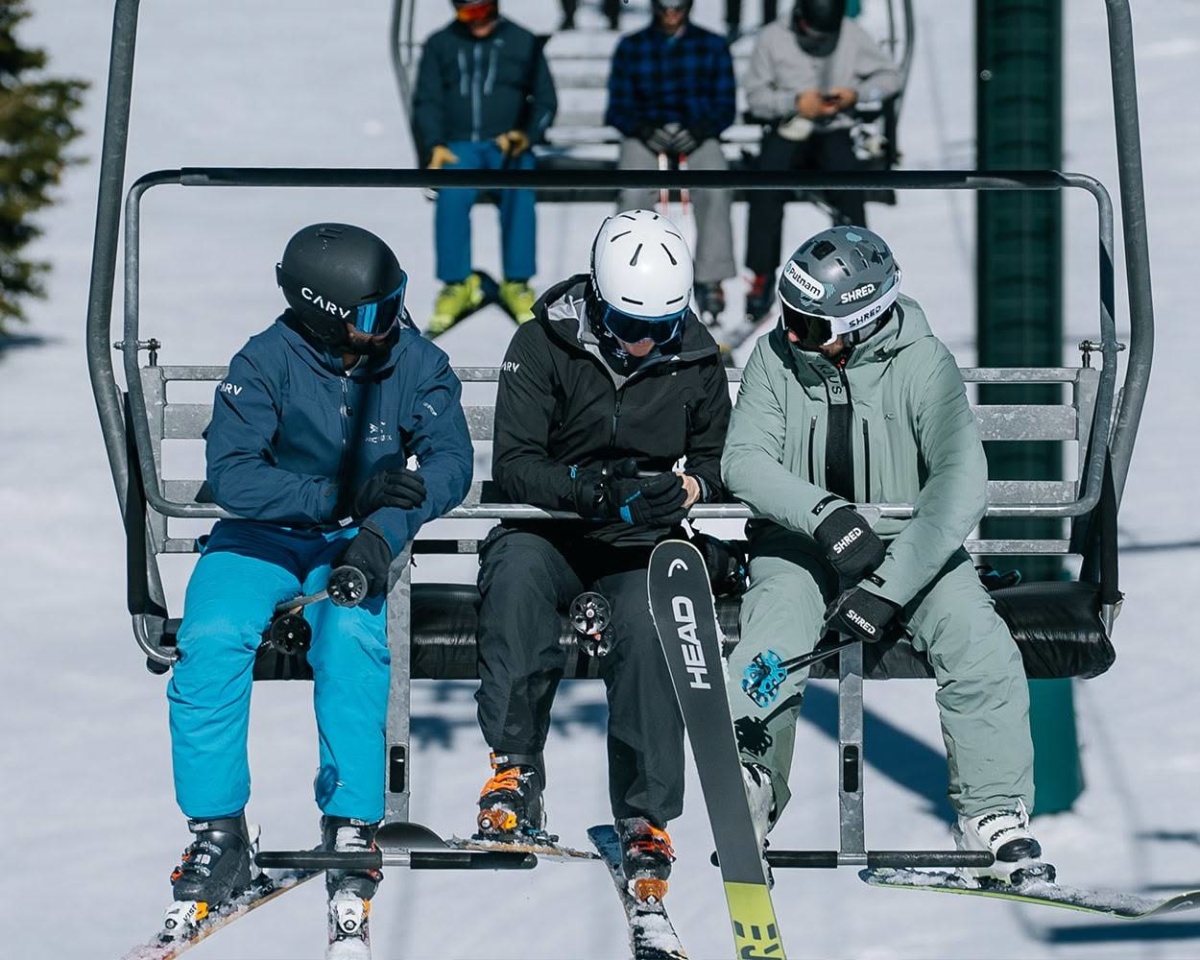
It seems crazy to say this now, especially given how challenging this work was, but we’re excited to share that the accuracy of the Carv 2 position, detected through the auto-calibration, is better than even the Carv 1 insert.
Using machine learning, we were able to achieve a rotation error of less than 5 degrees, which is what we saw on insert data.
Here’s an example of estimation error for Carv 2 sensor’s position on the skier's first lift of the day. You can see that initially the unit has an error of 16 degrees, but within a few seconds of skiing it decreases to 3 degrees, before settling at 1 degree. Incredible.
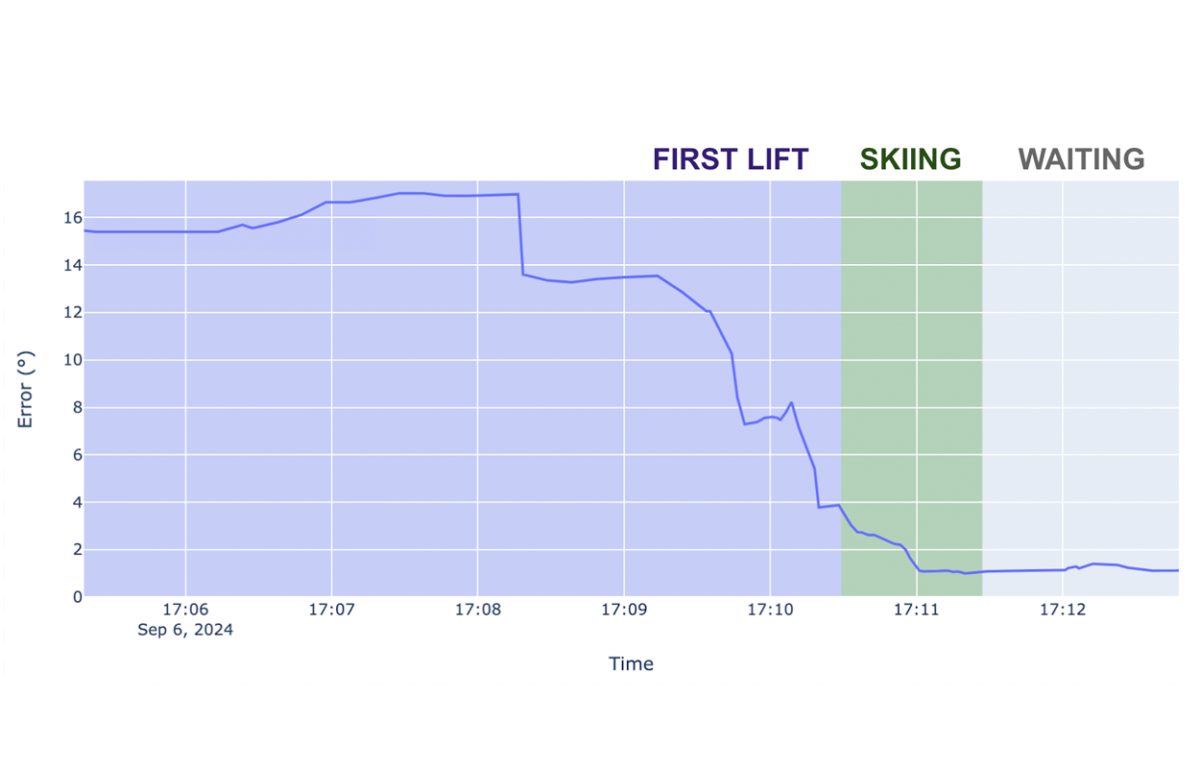
Carv can detect skiing after just a few moments of activity.
Challenge 2: How to measure body movement without pressure sensing
Skiing is a challenging sport to coach, because the whole body needs to change to have an effect on the tiny balance/pressure/edging movements underfoot to create an awesome ski turn.
Carv 1 pioneered the measurement of foot pressure in consumer sports, and with a good setup it accurately measures the underfoot pressure through the boot.
However, retrofitting perfectly to every ski boot was not trivial. In many cases it worked perfectly, but depending on individual feet and boot profiles, the quality of data could vary significantly.
For example, in some boots as you lean forward on the cuff (or tongue) of the boot, your heel is pushed to the rear and then downwards by a heel cup, causing heel pressure, despite the fact you’re leaning forwards.

Historically, we’ve had to carefully treat the pressure data to mitigate for the different boot fit profiles. For example, rather than focus on where your centre-of-pressure lies under your foot, we instead focused on the relative movements of your centre-of-pressure throughout a turn.
Similarly, rather than focus on the absolute magnitude of the pressure measurements (eg, in Newtons or kilograms), we would instead focus on how the pattern of pressure loading changed during a turn and where it peaked and troughed.
However, despite this, whenever we experimented with alternative balance and pressure measures using just motion data, we found that motion-based metrics consistently outperformed pressure-based metrics. And if we asked AI models to maximize the accuracy of the Ski:IQ algorithm, the models would place the majority of their weight on the data from the motion sensors, mostly discarding the pressure sensors.
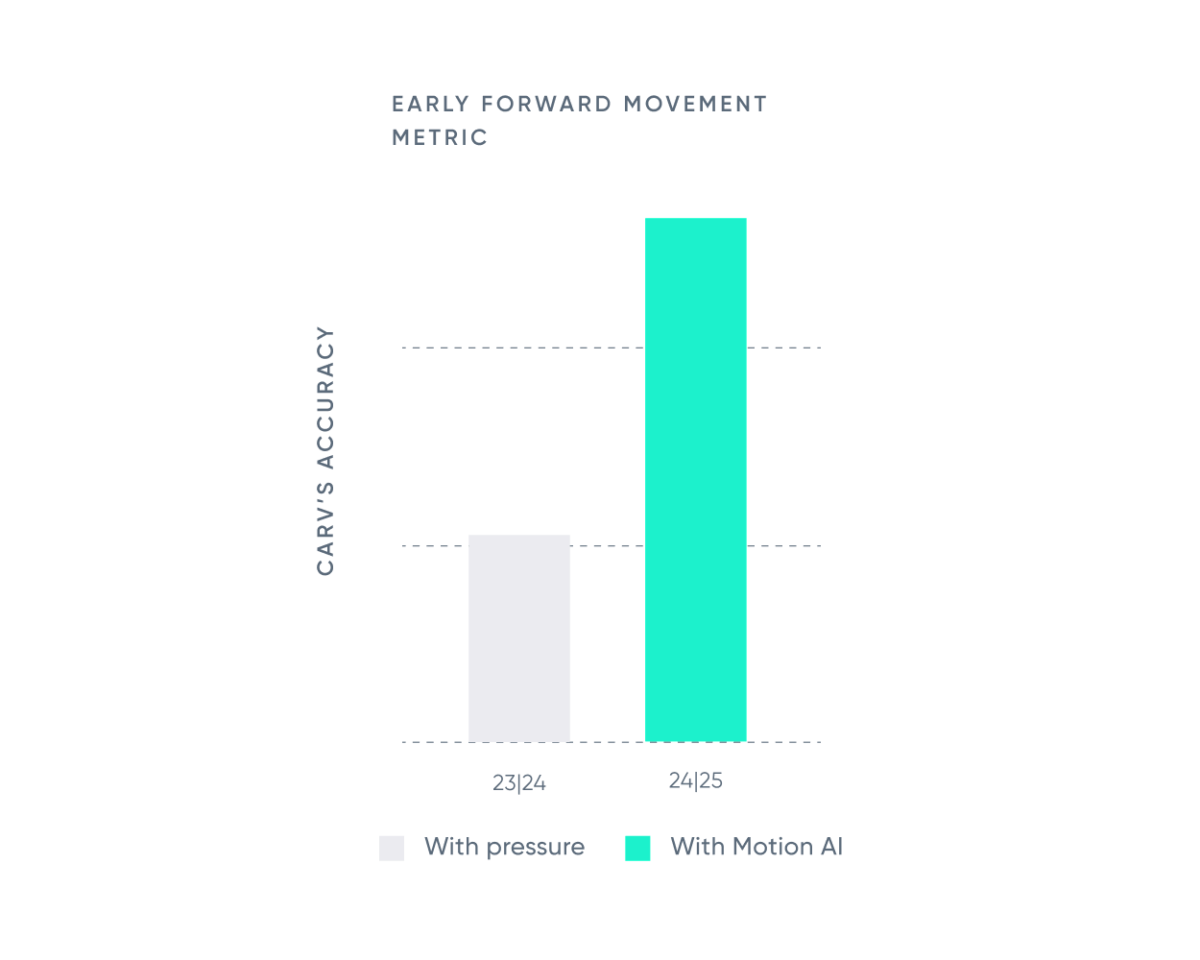
So what’s happening?
Because of the discrepancy between boot setups of different users, the same movement in their upper body corresponds to different pressure measurements under the foot.
However, the acceleration and rotation of the feet that corresponds to those upper body movements is the same for all skiers. So the AI found it better to use the movement of the motion sensor as a measure of skill compared to using pressure data.
For example, when we pulled apart the motion data, we realised that the AI was sensing that forward movement of the body at the transition by detecting the resulting relative backward movement of the boot as you push your body forward. As Newton taught us, every action has an equal and opposite reaction, and this has allowed us to create a forward lean metric that is better at separating skier abilities than the Carv 1 pressure-based metric.
But how do we know it’s better?
To understand the power of a metric in identifying skiing technique, we measure the Sam’s Tau of that individual metric in differentiating between levels of skier – as classified by instructors. In the example above, we can actually see the improvement of the new motion-based Early Forward Movement metric compared to pressure:
So what does it all mean? Our new Motion AI model allowed us to make more accurate versions of the following metrics using just our motion data alone:
Early Forward Movement
Mid-Turn balance
Transition Weight Release
If you’ve skipped the detail, welcome back… here is the summary
We trained an AI algorithm to detect the exact position of Carv 2 on your boot. So you can put it anywhere. And it’s even more accurate than having the insole in the boot.
We found that pressure metrics were good, but not as good as doing it all by looking at the motion of your feet. Even balance metrics like forward movement were made more accurate using motion data.
So we were off to a great start.
At this point a few of team wanted to keep skiing after May, and wanted to jet off to Chile – so we decided to crack on with making Carv a truly all-terrain coach.

All-Terrain
One of the biggest requests from you all is to get Carv to work on all-terrain types, not just on groomed runs.
And I hear you – there’s nothing worse than hitting your perfect powder run and getting a 75 Ski:IQ.
With Carv 2 / Ski:IQ Nevado, when you're skiing powder or moguls, Carv won't penalize you with lower Ski:IQ scores like in previous versions. Instead, the system will adapt to the terrain, scoring you on the right skills for each terrain, and providing relevant tips and insights to help you perform better.
We’ve wanted to address the terrain gap in Carv for years, but it’s a tough problem and we wanted to get it right. The first challenge was to reliably detect the snow type so you don’t ever have to get out your phone.
Let’s get nerdy
The first step was to create an AI classifier of terrain. This is an algorithm that must run in real-time on the phone to assess which type of terrain you’re skiing on.
To train the algorithm, we collected 11,000 video sessions across a range of terrain and we had these labeled by world-class instructors. But most importantly, we also used everything you all submitted over the last few seasons. Each time you scored terrain for us, it helped us make Carv better – and we couldn’t be more grateful to you all.
Carv now detects the snow surface, as you ski!
After a lot of work, we’re pleased to report that the classification algorithm is now 91% accurate across terrains. And it will only improve from here.
As of writing, it’s great in almost every case, but we need to gather more data to solve for some ambiguous snow surfaces – for instance, imagine a groomed trail that had just had 5cm of powder fall on it. However, it’s something we can update as we go, so it will keep improving the more the community skis with Carv.
So, a personal ask from me: Please label your terrain – it helps Carv get better!
Of course, accurate terrain classification is all well and good, but the really great part is that now Carv can detect the terrain, it can adjust which metrics it scores you on, and give you coaching that is more suited to the snow you just skied.
That’s great because most of us really want coaching when we find our technique unravels a bit – and that’s largely when we get into harder terrain.
Finally, one small gift back to the community.
We made the Carv 2 sensors free.
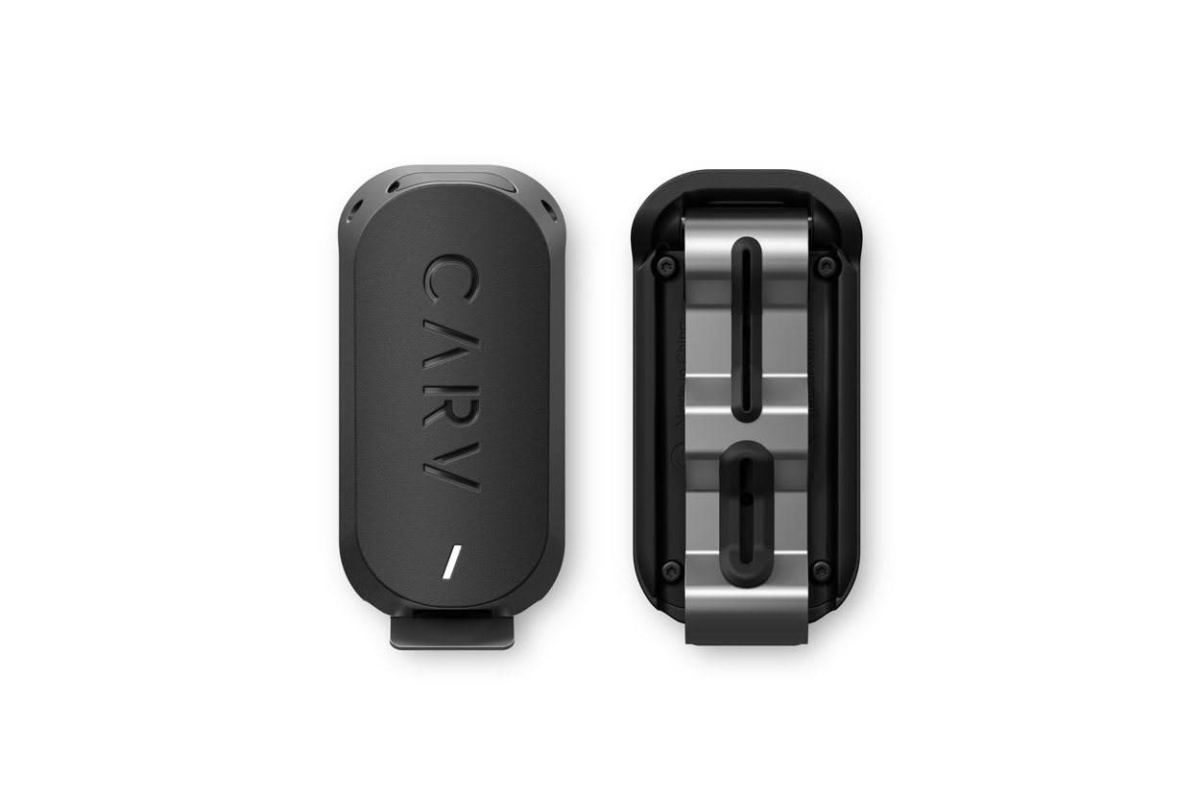
With Carv 1 we had to charge for the sensors and the pass (membership) – but almost all our work happens in the software, and having additional charges on top of the pass was never our end goal.
Now any skier can get Carv 2 free with an annual pass for just $249. If you only ski one week, you still have to buy the device, but at a significantly lower price. We wanted Carv 2 to be a device that anyone can try – and we hope that with this new offer you will feel that way too.

Current subscribers
I want to say a heartfelt thank you to all of our original subscribers and founder members. You backed us when the product was difficult to fit and had lower accuracy (particularly in the early days).
To pay your support forward, we are offering all annual subscribers the ability to upgrade in their membership portal at a discounted rate. Visit Manage Membership in the app, or click here to log in to your portal.
Lastly, we will roll out Ski:IQ Nevado to both Carv 1 and Carv 2 sensors and the accuracy of Carv 1 sensors with Ski:IQ Nevado is equivalent to Carv 2. Please note that for future releases of Ski:IQ we will prioritize the accuracy of the Carv 2 hardware.
See you on the slopes!
Jamie Grant PhD
Carv CEO and Co-founder

Written by: Jamie Grant
Carv Co-founder + CEO
We started Carv in 2015 with a dream of increasing enjoyment and participation in skiing by bringing real-time personalised coaching to the 92% of skiers who don’t have traditional lessons. Now, 6 years later, I'm humbled Carv has shared over one million ski tips with over 20,000 skiers across the globe.